 The expected has happened – Apple have unveiled their new Intel-basedMacs.
The expected has happened – Apple have unveiled their new Intel-basedMacs.
The first to appear are the iMacs boasting a dual-core Intel CPU,which are actually available to buy now. The long awaited new laptop (now calledthe MacBook Pro) will be available in Feb, but if you’re really chomping at the bit, you can pre-order though AppleStores.
The Intel chip used is the Core Duo (which is an evolution of the Pentium M). The 17″ iMac comes with a 1.87GHz version and the 20″ with a perkier 2.0GHzprocessor, both with Radion X1600 graphics cards.
All bus speeds have been boosted to 667MHz and now use PCI-Express. The rest of the spec is the same as the old iMacs – as are the cases. However the new architecture gives an speed increase (on paper) of 2-3 times the current G5 equivalent.
The MacBook Pro is currently only available in a 15.4″ version, but comes witheither a 1.67GHz or 1.83GHz Core Duo. Both modelsnow have a built-in iSight (video camera) and infra-red port (with an Apple remote) so they can be used as a portable versions of the iMac.
Steve Jobs showed his confidence in the new machines and their stability by running the whole Keynote presentation on the Intel iMac’s using native Intel compiled applications.
It’s all about software
 Most of the keynote was about the new version on iLife, which you won’t be surprised to hear is called iLife’06. It continues to contain thestandard iTunes, iMovie HD, iDVD and GarageBand, but they’ve all had somemajor reworking.
Most of the keynote was about the new version on iLife, which you won’t be surprised to hear is called iLife’06. It continues to contain thestandard iTunes, iMovie HD, iDVD and GarageBand, but they’ve all had somemajor reworking.
With the arrival of the new Intel-chipped machines, they’ve all been changed to “Universal Applications,” so they’ll run on both Power and Intel CPUs.
There’s also a new application – iWeb – designed to make publishing a Websitevery easy. It works with Apple’s .Mac service (which costs money) butit’s sure to attract lots of new users, getting them to create new blogs. It allows integration with iPhoto for publishing photo galleries, maintaining a blog, etc.
iPhoto has had a major upgrade, making it much faster and able to now handle libraries of up to 250,000 photos (up from 25,000). There’s a host of new image manipulation features which work at the click of a button.The main new feature is Photocasting – similar to podcasts – but forphotos (again publishing needs a .Mac subscription). Anyone cansubscribe to a photocast and then have complete use of the images.
 As Simon Newsflashed during the event, Garageband now supports making podcasts. It has microphone soundenhancements so the mic on a iMac or Powerbook can be used and it willautomatically reduce the background music while you’re talking. In addition to this you can insert photos to make it more interesting (Mr Jobs demoed this bydoing a Inside Mac – Steve’s rumours blog – which had an amusing twistto it as Apple are paranoid about info leaking out).
As Simon Newsflashed during the event, Garageband now supports making podcasts. It has microphone soundenhancements so the mic on a iMac or Powerbook can be used and it willautomatically reduce the background music while you’re talking. In addition to this you can insert photos to make it more interesting (Mr Jobs demoed this bydoing a Inside Mac – Steve’s rumours blog – which had an amusing twistto it as Apple are paranoid about info leaking out).
iMovie HD can do all sorts of animated titles and effects, exporting straight to a video iPod using the correct codecs, frame sizing, etc.
iDVD supports HD and at last external DVD burners straight from the programitself.
iWork’06 has also been upgraded – but frankly it’s not that interesting.
UK Pricing (inc VAT)
15″ MacBook Pro 1.67GHz £1,429.00
15″ MacBook Pro 1.83GHz £1,779.00
17″ iMac £ 929.00
20″ iMac £1,229.00
iLife’06 – £ 55.00 (included with new Macs)
iWork’06 – £ 55.00
Other mini announcements were a new iPod radio remote, iPod AVconnection kit and iPod nano lanyard in-ear phones.
Mac Book Pro
Watch Steve’s latest show-off
iLife’06
iWork’06
Intel Core Duo
 JVC has unveiled the flagship model to its extensive range of Everio hard drive camcorders, the GZ-MG77.
JVC has unveiled the flagship model to its extensive range of Everio hard drive camcorders, the GZ-MG77. In the highest resolution mode, Ultra Fine, users can record 7 hours and 10 minutes of video at 9 Mbps.
In the highest resolution mode, Ultra Fine, users can record 7 hours and 10 minutes of video at 9 Mbps. Video can be recorded in both standard and widescreen aspect formats, with an option to record stills.
Video can be recorded in both standard and widescreen aspect formats, with an option to record stills. US firm Vizzion have announced the introduction of their innovative traffic-watching system “Traffic Vizzion” to eleven areas in the UK.
US firm Vizzion have announced the introduction of their innovative traffic-watching system “Traffic Vizzion” to eleven areas in the UK. GPS users can also call up a “Find Nearby Cameras” function to list cameras close to their current location, and then select and view any camera from the list in the hope of finding the best way out of a jam.
GPS users can also call up a “Find Nearby Cameras” function to list cameras close to their current location, and then select and view any camera from the list in the hope of finding the best way out of a jam. Traffic Vizzion runs on Windows Mobile 2003 for Smartphones, and relies on a working Internet connection (e.g. GPRS), with a Bluetooth GPS device required for the added features.
Traffic Vizzion runs on Windows Mobile 2003 for Smartphones, and relies on a working Internet connection (e.g. GPRS), with a Bluetooth GPS device required for the added features. No idea if we’re ever going to see it turning up in Blighty any time soon, but we love this crazy new Sony VN-CX1 USB optical mouse-phone.
No idea if we’re ever going to see it turning up in Blighty any time soon, but we love this crazy new Sony VN-CX1 USB optical mouse-phone. The clever stuff happens when a call comes in.
The clever stuff happens when a call comes in. A potential problem might arise if you wanted to use the mouse when you’re on a call, but we think you can just switch to speakerphone mode. Or maybe not (the translated press announcement goes on about ‘knitting machines’ so it’s a bit vague).
A potential problem might arise if you wanted to use the mouse when you’re on a call, but we think you can just switch to speakerphone mode. Or maybe not (the translated press announcement goes on about ‘knitting machines’ so it’s a bit vague).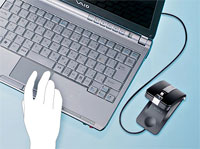 Although the VN-CX1 doesn’t look like the most comfortable mouse we’ve ever seen, it’s small and light enough (45.5 × 23.9 × 89.2 mm, 67gms) and certainly looks a fun product.
Although the VN-CX1 doesn’t look like the most comfortable mouse we’ve ever seen, it’s small and light enough (45.5 × 23.9 × 89.2 mm, 67gms) and certainly looks a fun product. D-Link’s new Skype USB phone adapter (DPH-50U) is a neat widget that lets users make and receive Skype calls on their existing corded DECT or cordless phone, without the need to have a pesky ‘call centre’ headset stuck on their head.
D-Link’s new Skype USB phone adapter (DPH-50U) is a neat widget that lets users make and receive Skype calls on their existing corded DECT or cordless phone, without the need to have a pesky ‘call centre’ headset stuck on their head. The concept seems a winner to us – by using your existing telephone you should enjoy better sound quality than a cheapo headset, and D-Link claim that you’ll be able to use your phone’s built-in features such as speed dial, redial, mute and caller ID2 for both Skype and landline calls.
The concept seems a winner to us – by using your existing telephone you should enjoy better sound quality than a cheapo headset, and D-Link claim that you’ll be able to use your phone’s built-in features such as speed dial, redial, mute and caller ID2 for both Skype and landline calls. The DPH-50U comes with custom software, two RJ-11 ports and a USB port to connect up the regular phone line, telephone and computer, with the unit drawing power from the computer’s PC port.
The DPH-50U comes with custom software, two RJ-11 ports and a USB port to connect up the regular phone line, telephone and computer, with the unit drawing power from the computer’s PC port.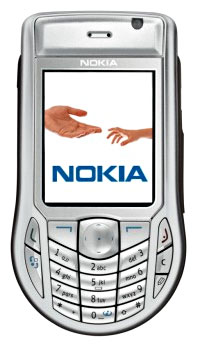 A new UK survey shows a dramatic increase in the use of picture messaging with WAP also growing in popularity.
A new UK survey shows a dramatic increase in the use of picture messaging with WAP also growing in popularity.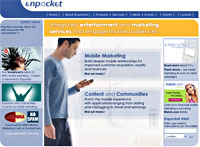 When it comes to seeking mobile information online, it’s the geezers who are keenest to get their keypads rattling, with 38% accessing mobile Internet (WAP) sites compared to 26% of ladies.
When it comes to seeking mobile information online, it’s the geezers who are keenest to get their keypads rattling, with 38% accessing mobile Internet (WAP) sites compared to 26% of ladies.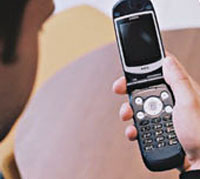 Elsewhere, the Mobile Data Association have calculated that WAP page impressions are now approaching the 2 billion per month mark, with the Mobile Media Monitor revealing the most popular types of site on the mobile internet.
Elsewhere, the Mobile Data Association have calculated that WAP page impressions are now approaching the 2 billion per month mark, with the Mobile Media Monitor revealing the most popular types of site on the mobile internet. The expected has happened – Apple have unveiled their new Intel-basedMacs.
The expected has happened – Apple have unveiled their new Intel-basedMacs.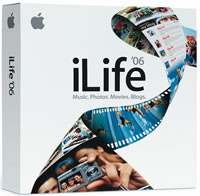 Most of the keynote was about the new version on iLife, which you won’t be surprised to hear is called iLife’06. It continues to contain thestandard iTunes, iMovie HD, iDVD and GarageBand, but they’ve all had somemajor reworking.
Most of the keynote was about the new version on iLife, which you won’t be surprised to hear is called iLife’06. It continues to contain thestandard iTunes, iMovie HD, iDVD and GarageBand, but they’ve all had somemajor reworking.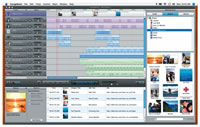 As
As  Yahoo is launching a new service aimed at making it easier for users to connect to Yahoo Internet-based services through multiple Web-connected devices, including mobiles and TVs.
Yahoo is launching a new service aimed at making it easier for users to connect to Yahoo Internet-based services through multiple Web-connected devices, including mobiles and TVs.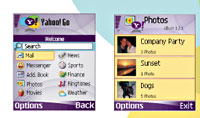 So long as the device is connected to the Internet, users will be able to access their personal Yahoo content such as photos, email and address books.
So long as the device is connected to the Internet, users will be able to access their personal Yahoo content such as photos, email and address books.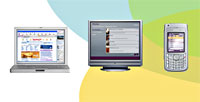 Yahoo! will be rolling out their Go TV service in the next few months, with the service enabling users to access various other Web based services for TVs, including local movie listing search and personalised MyYahoo! functions.
Yahoo! will be rolling out their Go TV service in the next few months, with the service enabling users to access various other Web based services for TVs, including local movie listing search and personalised MyYahoo! functions.